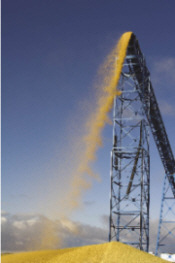



The Crises Of The Global Grain Supply
AUSTRALIA - Over the past six months, the continuing global grain shortage has led to unprecedented prices for feed grains. Until now, the Australian chicken meat industry has strongly resisted the imperative to raise prices of chicken meat despite the substantial increase in production costs. Unfortunately, a price increase for chicken meat has now become inevitable.
Chicken is a nutritious and staple element of the Australian family diet and has enjoyed low prices for many years, despite the rising cost of major inputs such as feed grains (due to the drought), petrol prices for transport and deliveries and electricity prices which have been worn by the industry. This situation is no longer sustainable. The price of chicken meat will have to rise from mid November.
The price of a tonne of wheat, the industry’s single biggest input cost, has more than doubled in a year and hit a new high this month of $492. Grain represents the major part of chicken feed, for which there is no substitute. Feed in turn makes up more than 60% of the cost of producing a meat chicken and the recent increase in feed costs alone translates into cost increases in excess of 20-30%.
Dr Andreas Dubs, Executive Director of the Chicken Meat Federation, said “The two predominant grains in chicken feed, wheat and sorghum, account for approximately 70% of the feed, with other grains, protein meals, fats, vitamins and minerals making up the balance. With the unprecedented rise in the cost of grain, chicken producers are finally being forced to pass on these costs to the consumer.”
Coupled with this, fuel costs have continued to rise from an average 115c per litre in November 2006 to 125c per litre in July 2007 and electricity costs have almost doubled. Consumers are likely to be paying an average of 20-30% more for chicken meat, from whole chickens right through to further processed products.
Even following this price increase, chicken meat remains very affordable. Unlike other meats, the price of chicken when adjusted for inflation has remained constant for over a decade. The industry’s substantial efficiency gains (achieved through improved breeding and nutrition) have continually been passed on to consumers as reflected by chicken meat now selling for about half as much as it did in 1970.
The industry continues to be committed to finding new ways to improve efficiencies and pass on cost savings to consumers in years to come. However as Dr Dubs states, “The facts speak for themselves: with such substantial and sustained increases in the cost of grains and other inputs, the forthcoming price increase is simply inevitable.”











